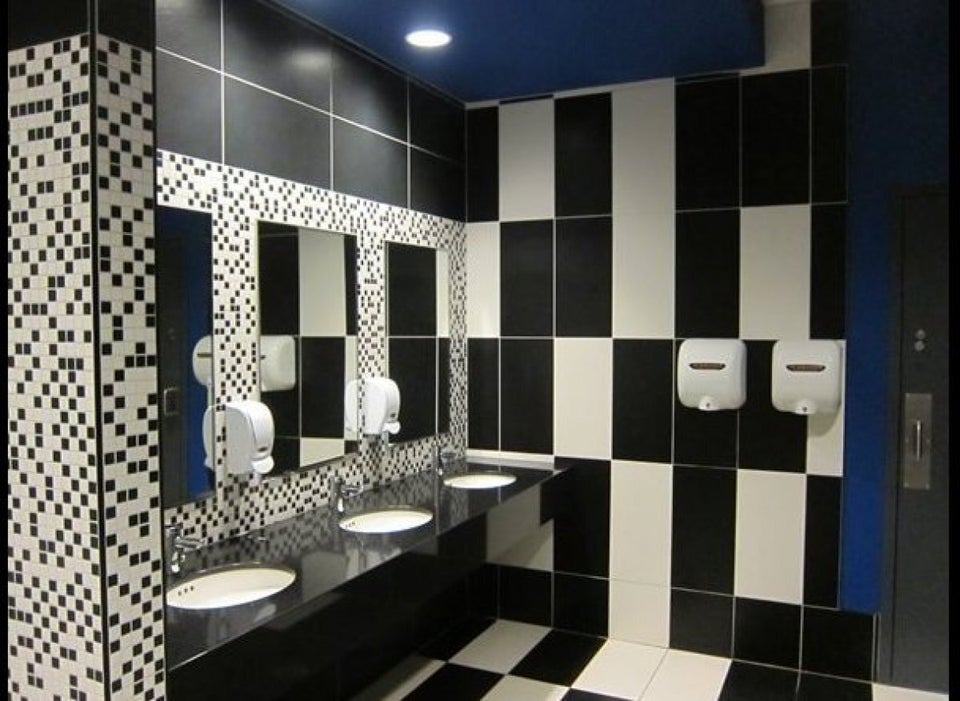There's nothing worse than that sudden urge from the bladder or the bowels. At home, it's not a concern but when we are out our only solace is the public toilet. Whether you call it the bathroom, the washroom, the powder room or the water closet, humans have a constant need for open access to the porcelain waste removal devices.
The public toilet is well established in our history dating back to the second millennium BC. Back then, only the rich could afford to have one - no doubt why it is to this day still called the throne. The rest of the population had to find common areas where toilets were abundant or be stuck using a bucket. Not surprisingly, the public option was more hygienic as water was used to remove the waste and reduce the risk of illness.
For thousands of years, the toilet was viewed more as a convenience than a means for health protection. But in the 1800s, thanks to the realization sanitation as a key factor in health, the toilet became a common part of the home. Over the coming decades, public forms increased in number allowing more people 'to go' when they were away from home. This intervention helped to reduce the spread of infectious disease; yet concerns for pathogen spread in these environs also increased. This culminated in a 1976 UK study showing the link between public toilets and the potential for infectious disease spread.
In the next decade, public health researchers decided determine whether this germ panic was warranted. In 1982, a group of researchers ventured into over 250 households armed with swabs and culture plates. They identified a number of different locations where infectious diseases might spread. Although they found bacteria in the toilet environment, they noted that flushing helped to reduce the spread and keeping the lid down would help to keep infectious aerosols from rising into awaiting nostrils.
The study also showed the importance of quantity in terms of infection. Most gastrointestinal infections can only happen if we ingest hundreds of thousands of bacteria. In this study, the numbers were significantly lower, in the hundreds range. This suggested the possibility of a toilet-based infection was low. With regular cleaning and proper hygiene, people should quite simply not be worried at home.
Over the coming 30 years, researchers attempted to define the public toilet risk. Studies from all over the globe showed as expected the presence of pathogens. But in line with the 1982 study, the risk was normally low at best provided there was appropriate hygiene, cleaning and disinfection measures in place. Yet, the worry remained.
In 2011, the pathogen paradox led a Colorado team of researchers to take a different approach to understanding the impact of the toilet on health. Instead of only looking for pathogens, they identified all the bacteria present on all the surfaces. As they searched ten different surfaces in a dozen restrooms, they found an incredible universe of microbes with few to no direct identification of pathogens. The overall conclusion revealed the toilet was more than a vehicle for infectious disease as it had its own ecology. Yet, without proper hygiene, the bad bacteria could thrive and eventually spread.
The study left a very important question unanswered. If the toilet was truly a diverse ecology, then to what extent did pathogens play a role? After all, pathogens exist almost everywhere and yet only through specific routes can we get sick. Last week, a team of American researchers undertook a study to answer this query. What they found was a richly diverse population of microbes in which only a few played a role in infection.
The team collected swab samples over eight weeks from restrooms on the floor of a building at San Diego State University. They then isolated the genetic material from the bacteria and attempted to identify what species were present. They expected to find a rather high number and they were not disappointed. The swabs revealed over 14 million different types of genetic material and some 77,000 possible bacterial and viral species.
A closer inspection of the bacterial species revealed only few pathogenic species. Of those, most were unable to survive over long periods of time. There was little to no risk for infection. As to the majority of bacteria found, they were common -- and harmless -- fecal and skin bacteria. Even high frequency use of a toilet could not develop pathogens in high enough levels to cause infection.
If there was one possible concern coming from the work, it was the presence of antibiotic resistance genes in one of the more common bacteria isolated, Staphylococcus aureus. This meant some of the samples were MRSA and could survive long enough to inoculate a person and possibly cause infection. However, this bacterium is easily killed with soap and water, hand sanitizers, and disinfectants; its presence should not lead to panic.
The combined studies on public toilets reveal not only their importance for public health but also how low the chances are we may catch an infection from them. Though once believed to be a rampant source of illness, they are in fact incredibly diverse ecologies. Moreover, they provide us with the ability to head away from home with the comfort of knowing we have a place to relieve ourselves safely. Granted, they may not be our first choice but when it comes to those uncontrollable pressures, they are at least safe enough to keep us going until we can head home.
ALSO ON HUFFPOST:
